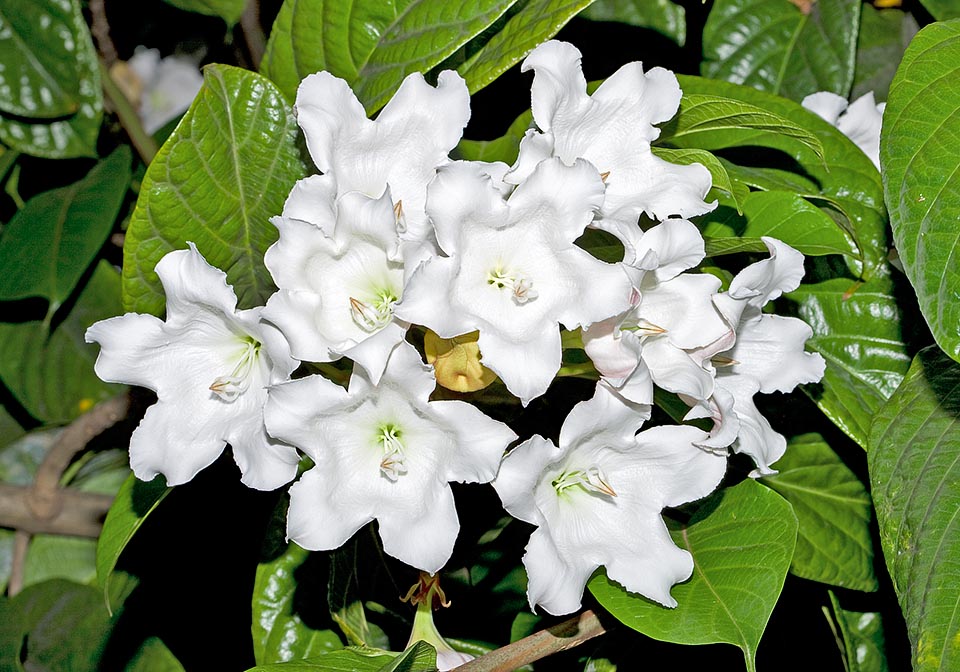Family : Apocynaceae

Text © Pietro Puccio

English translation by Mario Beltramini
The Beaumontia grandiflora Wallich (1824) is native to China (Yunnan, Guangxi), India, Nepal, Bangladesh, Laos, Myanmar, Thailand and Vietnam.
The genus is honoured to Diana Beaumont (1765-1831) from Bretton Hall, passioned collector of minerals and of exotic plants, who sent the plant to Nathaniel Wallich; the name of the species is the combination of the Latin words “grandis” = great and “flos, -oris” = flower, with obvious reference.
Common names: “Easter lily vine”, “Herald’s trumpet”, “Nepal trumpet flower” (English); “bougainvillier blanc”, “lys bois” (French); “Heroldstrompete”, “Nepal Trompetenblume”, “Lilienwein” (German); “trompeta blanca” (Spanish); “trombeta de arauto”, “trombeta-branca”, “bomôncia” (Portuguese).
Sturdy, evergreen climber, with woody stalks and great ovate leaves, long up to 25 cm, with sharp apex, of intense glossy green colour on the upper side, slightly tomentose on the inferior page.

Vigourous South East Asia climber, the Beaumontia grandiflora is frequent in tropical gardens with showy corollas of 12 cm of diameter © Giuseppe Mazza
Climber of great ornamental value, amply cultivated in south eastern Asia because of its luxuriant foliage and the abundant and perfumed blossoming, it can be also cultivated in areas with a warm-temperate climate, as it resists, for short periods, to temperatures little under 0 °C, preferably in full sun. Seen its vigorous growth, it needs wide room and suitable, robust supports.
Synonyms: Echites grandiflorus Roxb. (1820); Beaumontia longifolia Lodd. ex Loudon (1830); Beaumontia longiflora Hook.f. (1882).
→ To appreciate the biodiversity within the APOCYNACEAE family please click here.
